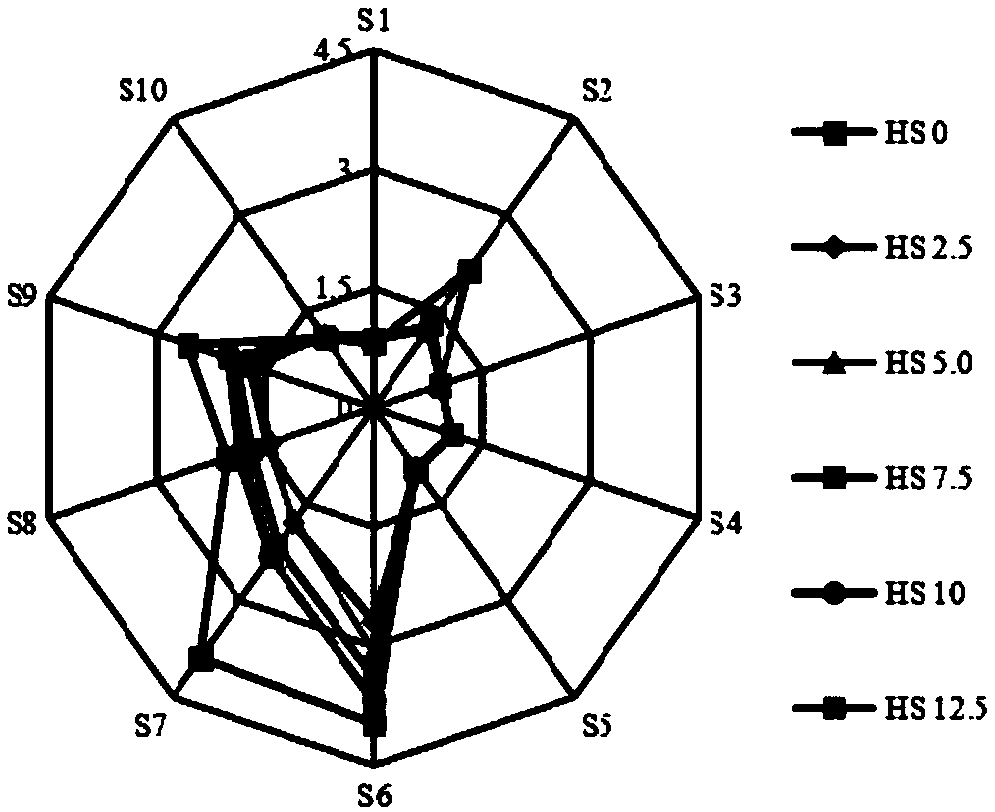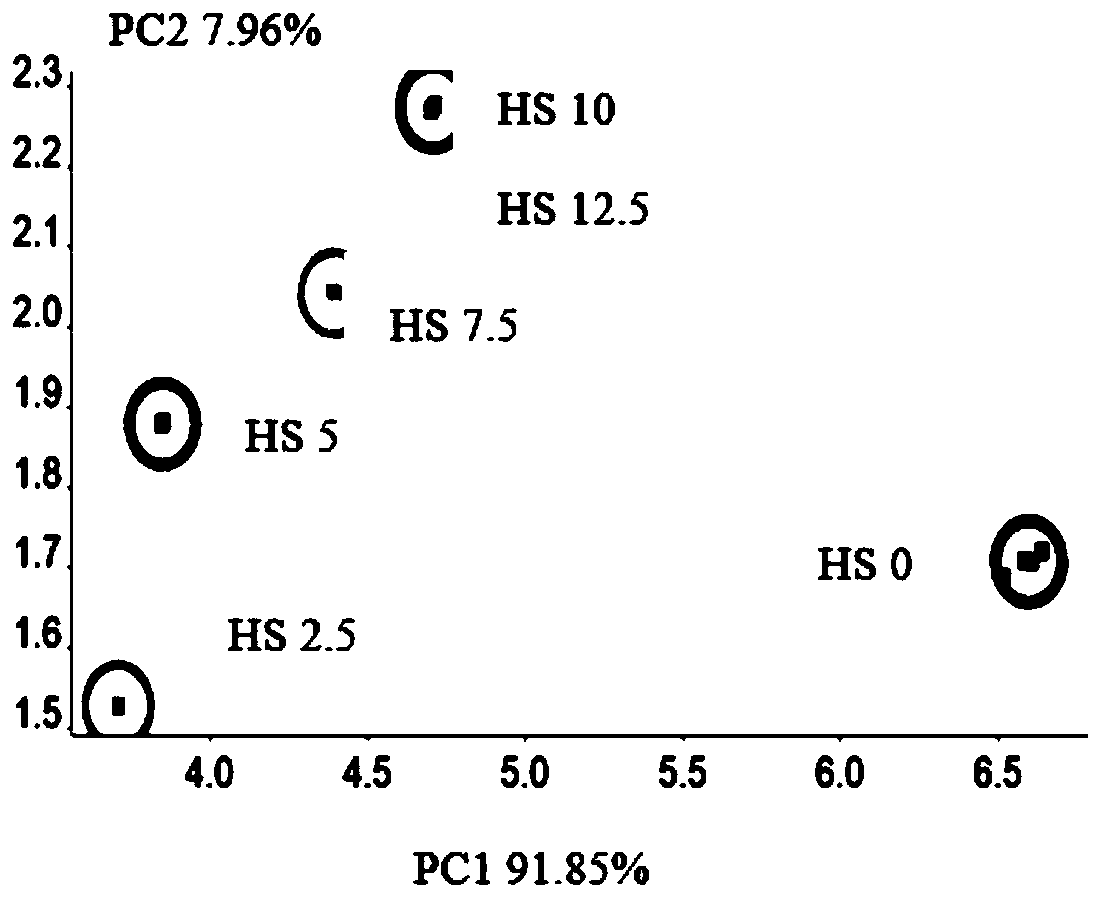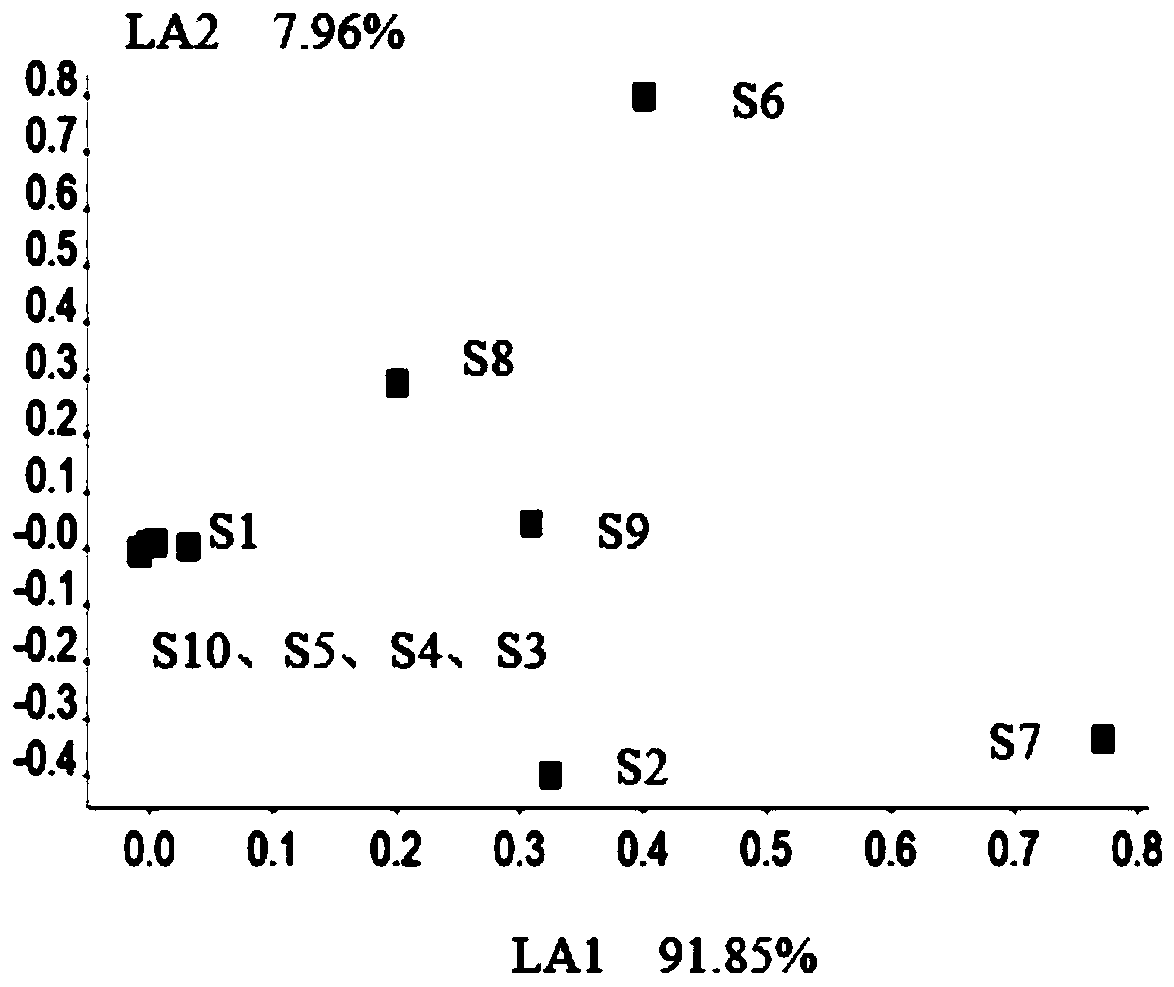Steamed Lipu taro quality discrimination method based on sensory evaluation and electric nose analysis
A technology of sensory evaluation and discrimination methods, which is applied in the direction of material analysis, analysis materials, and material inspection products by electromagnetic means.
- Summary
- Abstract
- Description
- Claims
- Application Information
AI Technical Summary
Problems solved by technology
Method used
Image
Examples
Embodiment
[0020] 1 Materials and methods
[0021] 1.1 Materials and equipment
[0022] Fresh Lipu taro (1.5-2kg / piece), produced in Hezhou City, Guangxi, has a complete shape and plump body, no insect spots and no mechanical damage.
[0023] German PNE3 electronic nose: Beijing Yingsheng Hengtai Technology Co., Ltd.; C21-RT2170 multifunctional induction cooker: Guangdong Midea Life Electric Manufacturing Co., Ltd.; AQT-1500 analytical balance: Adam Hengwei Wuhan Co., Ltd.
[0024] 1.2 Method
[0025] 1.2.1 Pre-treatment of Lipu taro
[0026] Wash the taro, cut off the outer skin, slice along the longitudinal direction of the taro, and cut into taro chips about 1cm thick, 8cm long, and 4cm wide.
[0027] 1.2.2 Preparation and sample collection of steamed Lipu taro
PUM
 Login to View More
Login to View More Abstract
Description
Claims
Application Information
 Login to View More
Login to View More - R&D
- Intellectual Property
- Life Sciences
- Materials
- Tech Scout
- Unparalleled Data Quality
- Higher Quality Content
- 60% Fewer Hallucinations
Browse by: Latest US Patents, China's latest patents, Technical Efficacy Thesaurus, Application Domain, Technology Topic, Popular Technical Reports.
© 2025 PatSnap. All rights reserved.Legal|Privacy policy|Modern Slavery Act Transparency Statement|Sitemap|About US| Contact US: help@patsnap.com



